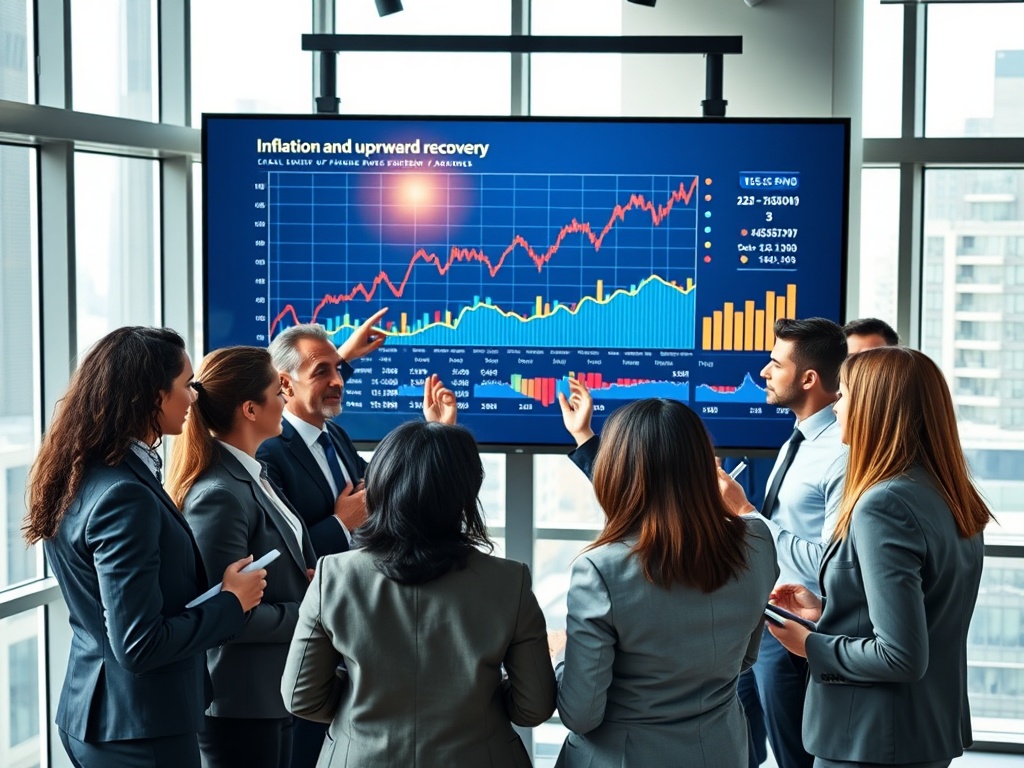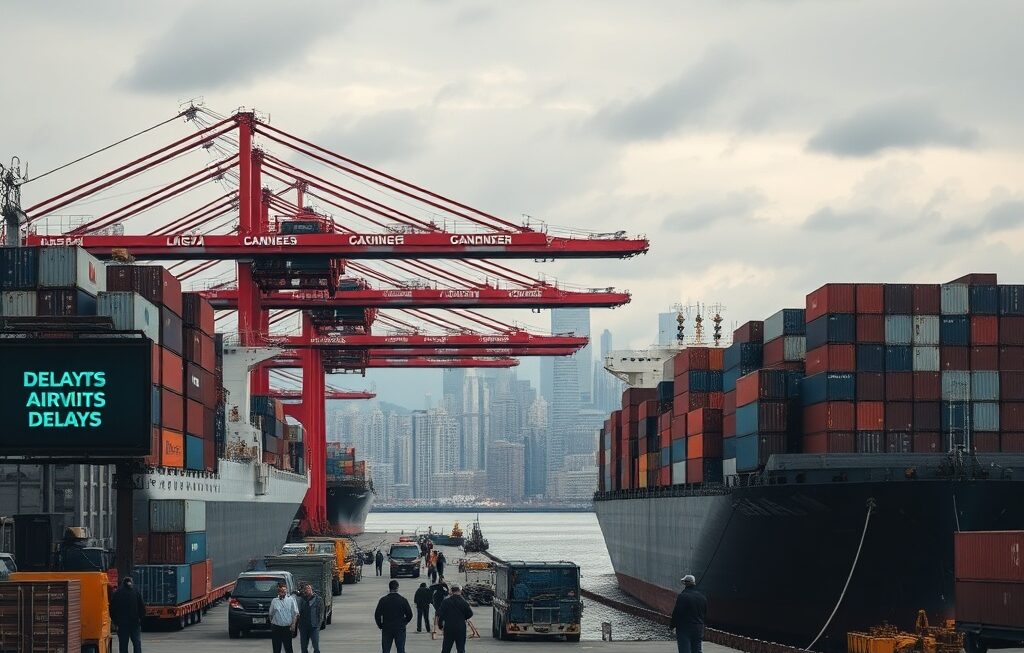How the Global Economy is Rebuilding Stability and Growth
The economic recovery after inflation has become one of the most crucial themes of the modern global economy. After several years of turbulence marked by high consumer prices, disrupted supply chains, and monetary tightening, the world is finally beginning to find its footing again. However, the path to recovery remains complex, requiring coordinated strategies, innovation, and adaptability across industries and nations.
Inflation reshaped nearly every aspect of economic life—altering consumption patterns, investment behavior, and government policy. Now, as central banks ease monetary pressure and global trade stabilizes, a new phase of cautious optimism is emerging. Understanding the dynamics behind this recovery is essential for business leaders, policymakers, and investors who aim to navigate a more stable yet unpredictable economic environment.
The Legacy of Inflation and Its Global Impact
The inflationary surge that began in the early 2020s left a lasting imprint on the global economy. Triggered by a combination of supply shortages, energy shocks, and fiscal expansion, it forced governments and central banks to take drastic measures.
While these policies successfully curbed price growth, they also slowed economic activity, increased borrowing costs, and constrained consumer spending. Consequently, businesses were compelled to innovate, automate, and rethink efficiency to remain competitive.
As the world transitions from crisis to recovery, the challenge is no longer controlling inflation but sustaining growth without reigniting price instability. This balance defines the economic recovery after inflation and will shape economic strategies for years to come.
Central Banks and the Shift Toward Monetary Stability
One of the most significant drivers of recovery has been the strategic shift in monetary policy. After years of aggressive interest rate hikes, central banks in the United States, Europe, and Asia are gradually relaxing their stances.
Lower interest rates are stimulating investment, easing debt pressures, and restoring confidence in credit markets. However, policymakers remain cautious. They aim to avoid premature easing that could reignite inflationary cycles.
This careful calibration reflects lessons learned from past crises—showing that stability requires patience, discipline, and clear communication. Transparency from institutions like the Federal Reserve and the European Central Bank has also helped markets adjust more predictably, supporting steady growth across sectors.
Consumer Behavior and Demand Rebalancing
During inflationary periods, households faced sharp declines in purchasing power, leading to reduced discretionary spending. As prices stabilize, consumer confidence is gradually returning.
Nevertheless, spending habits have evolved. People are now more value-conscious, prioritizing essentials and sustainable products over luxury goods. Digital commerce continues to dominate, but physical retail is recovering, supported by hybrid purchasing experiences.
In many regions, wage growth is beginning to outpace inflation, enabling a modest increase in real income. This shift not only boosts consumption but also signals a healthier and more balanced recovery trajectory.
Business Adaptation and the Rise of Resilient Models
The economic recovery after inflation is testing how well businesses learned from the shocks of the past decade. Companies that diversified supply chains, invested in automation, and adopted flexible pricing models are recovering faster than those that remained rigid.
Small and medium-sized enterprises (SMEs), once heavily impacted by inflationary costs, are now leading innovation in cost management. By leveraging technology, many have improved efficiency and reduced waste. Meanwhile, large corporations are focusing on long-term sustainability and digital transformation as part of their growth strategy.
Resilience has become the new currency of competitiveness. The ability to pivot quickly, optimize resources, and engage consumers authentically is now a defining factor in post-inflation success.
The Role of Government Policy in Recovery
Government intervention continues to play a pivotal role in shaping economic stability. Fiscal policies are increasingly focused on stimulating investment while maintaining budgetary discipline.
Infrastructure projects, green energy incentives, and workforce development programs are among the most effective recovery tools. By targeting long-term value creation instead of short-term relief, governments are laying the foundation for sustainable economic expansion.
Additionally, social safety nets and targeted subsidies are helping vulnerable groups regain stability. This inclusive approach ensures that recovery benefits are more evenly distributed, minimizing inequality and boosting consumer confidence.
Global Trade and Supply Chain Realignment
Global trade, once severely disrupted by pandemic restrictions and geopolitical conflicts, is showing signs of renewal. Logistics networks are becoming more agile, regional partnerships are strengthening, and nearshoring strategies are gaining traction.
The diversification of supply chains has not only reduced dependency on single regions but also enhanced resilience against future disruptions. Emerging markets in Southeast Asia, Latin America, and Africa are benefiting from new trade agreements and foreign direct investment.
These changes underline a broader truth: the economic recovery after inflation is not just about restoring pre-crisis systems but creating new, more adaptable global frameworks.
Investment Strategies in a Post-Inflation Era
As inflation subsides, investors are re-evaluating risk and opportunity. Fixed-income assets, once unattractive due to high inflation, are regaining popularity as yields stabilize. Meanwhile, equity markets are responding positively to renewed confidence in long-term growth.
Sectors such as technology, clean energy, and healthcare continue to attract strong investment, reflecting structural shifts in the global economy. Furthermore, sustainable finance is becoming a mainstream priority, with ESG (Environmental, Social, and Governance) principles guiding decisions.
Investors who prioritize diversification, sustainability, and innovation will likely be the biggest beneficiaries of the post-inflation recovery cycle.
Employment and Workforce Transformation
Inflation and its aftermath have accelerated changes in labor markets. While automation and digitalization have reduced demand for certain roles, they have simultaneously created new opportunities in technology, logistics, and renewable energy sectors.
The economic recovery after inflation is also characterized by a growing emphasis on job quality. Companies are recognizing that competitive wages, flexibility, and well-being initiatives are essential to attract and retain talent.
Governments are supporting this transformation through education reforms and training programs designed to align workers with future skills. The collaboration between public and private sectors will be crucial in ensuring inclusive employment growth.
Technological Innovation as a Catalyst for Recovery
Technology remains a cornerstone of modern economic resilience. Artificial intelligence, blockchain, and advanced analytics are revolutionizing productivity, transparency, and decision-making.
Automation has enabled businesses to reduce costs and improve efficiency during inflationary pressures, and now it’s driving post-crisis expansion. In manufacturing, for example, smart factories are increasing output while minimizing resource consumption. In finance, digital tools are improving accessibility and reducing transaction costs globally.
As the world transitions to more sustainable models, technology will continue to bridge gaps between innovation and economic inclusivity.
Sustainability and the Green Recovery
One of the most promising aspects of the global recovery is its growing alignment with sustainability goals. Many nations view the economic recovery after inflation as an opportunity to accelerate the green transition—reducing carbon emissions while fostering economic growth.
Investments in renewable energy, electric mobility, and eco-friendly infrastructure are not just environmentally responsible; they are also economically strategic. Green sectors are among the fastest-growing in the post-inflation landscape, creating jobs and stimulating technological development.
Businesses adopting sustainable practices are gaining not only brand credibility but also long-term profitability as consumers increasingly prefer eco-conscious companies.
Regional Perspectives on Recovery
Each region is experiencing recovery at its own pace. In North America, stable consumer spending and technology investments are driving steady growth. Europe is benefiting from strong policy coordination and a focus on green transformation.
Meanwhile, Asia continues to lead global expansion thanks to digital innovation and strong manufacturing output. Emerging markets across Africa and Latin America are rebuilding momentum through infrastructure projects, improved governance, and foreign partnerships.
Although challenges such as debt sustainability and geopolitical uncertainty persist, the overall direction remains positive. Coordinated global response has proven that resilience and cooperation can overcome even the toughest inflationary shocks.

The Path Forward: A More Balanced Global Economy
The economic recovery after inflation offers valuable lessons about adaptability, foresight, and the importance of collaboration. world economy is not returning to its old normal—it is evolving into a more digital, sustainable, and interconnected system.
While new risks will inevitably arise, the collective ability to anticipate and respond effectively has never been stronger. Businesses, governments, and individuals now share a clearer understanding that resilience is built on preparation, not reaction.
Looking ahead, the post-inflation era will reward those who embrace change, prioritize sustainability, and invest in innovation. By doing so, the global economy can continue to rebuild not just stability, but prosperity for generations to come.




